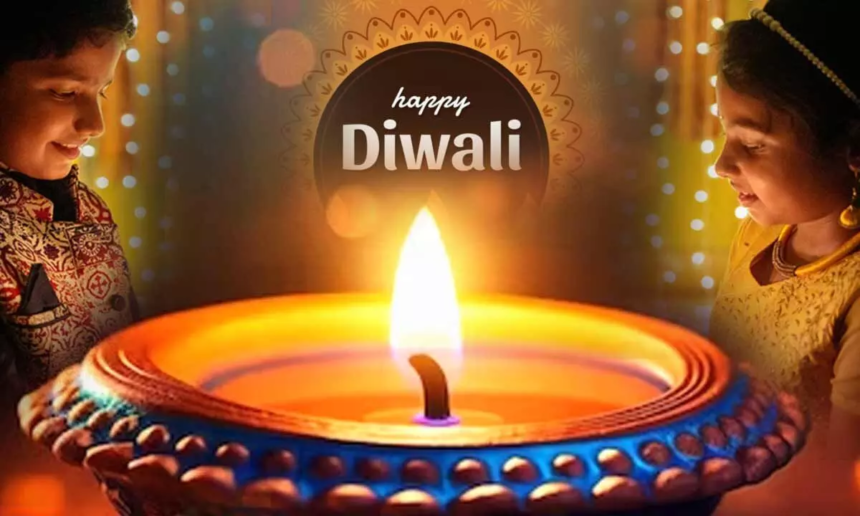Diwali 2023 : Diwali in North India marks return of Rama, in South it emphasises offerings to deities. Here’s more about how Bengal, Gujarat, Maharashtra, and other states celebrate it.
Overview of Diwali 2023
Diwali 2023 : Diwali, also known as the Festival of Lights, is one of the most vibrant and widely celebrated festivals in India. The enthusiasm and joy that accompany this festival are unparalleled, making it a truly special time for people across the country. In this article, we will delve into the various ways Diwali is celebrated across different regions of India, showcasing the rich cultural tapestry that defines this auspicious occasion.
This is the time of year when the Hindu community decorates their homes and streets with glittering diyas, sparkling fairylights, glowing lamps, and vibrant rangoli. Firecrackers, which are no longer used because of the smog and air pollution, light up the night sky in honor of Diwali, the festival of lights. Diwali and Narak Chaturdashi will be observed on November 12, 2023, this year.

Diwali 2023 : The Hindu calendar states that Diwali, also known as Deepawali, falls on the fifteenth day of the month of Kartik. This year, Chaturdashi Tithi falls on November 11 at 13:57 PM and ends at 14:44 PM, according to the Drik Panchang. With several legends attached to it, Diwali’s history dates back to ancient India. Some people believe it commemorates Lakshmi’s marriage to Vishnu, while others mark it as the celebration of Lakshmi’s birth, since it is thought that she was born on the new moon day of Kartik.
ALSO READ : Global Education Crisis 2023 : Teacher Strikes in Morocco & Oakland
Diwali celebration in north India
Diwali 2023 : Diwali, for Hindus in northern India, represents Ram’s return to Ayodhya with his wife Sita and brother Laxman following their 14-year banishment. Since it was a new moon day in the month of Kartik and it was pitch-black outside, Ram was greeted upon his return with diyas and fireworks that were lit up the entire kingdom.
Therefore, when people come together to celebrate Diwali and there are festivities everywhere, the lighting of diyas represents the victory of good over evil. Even today, people celebrate Diwali with fireworks and diyas lit in Uttar Pradesh, Punjab, Himachal Pradesh, Haryana, Bihar, and surrounding areas. Since Diwali is considered a lucky day in Himachal Pradesh, Delhi, and Punjab, some people also gamble on this auspicious night.
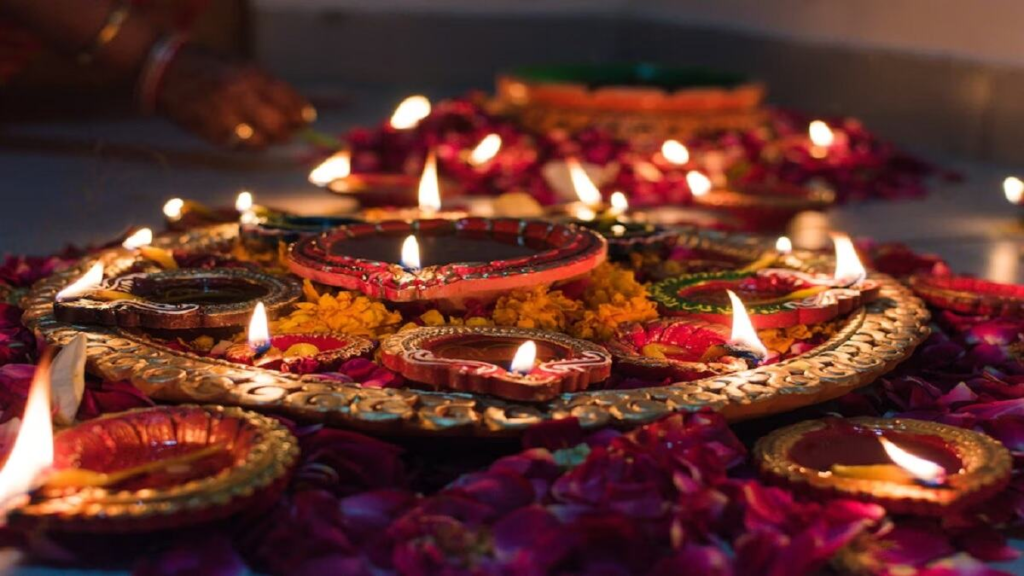
Diwali 2023 : Even though Sikhs do not celebrate Diwali, they participate in the festivities by lighting candles and diyas in their homes, which is why gurdwaras throughout Punjab are illuminated on this auspicious night. Houses in Delhi, Uttar Pradesh, and the neighboring Indian states are adorned with lights, candles, bandhanwars, rangolis, and diyas, and Laxmi puja is held at night.
In some homes, the devotees go so far as to place a silver coin in a tumbler of milk, which is then traditionally sprinkled throughout every room. Other customs include shopping, cleaning, gambling, redecorating, whitewashing, decorating the home, and exchanging gifts and candies.
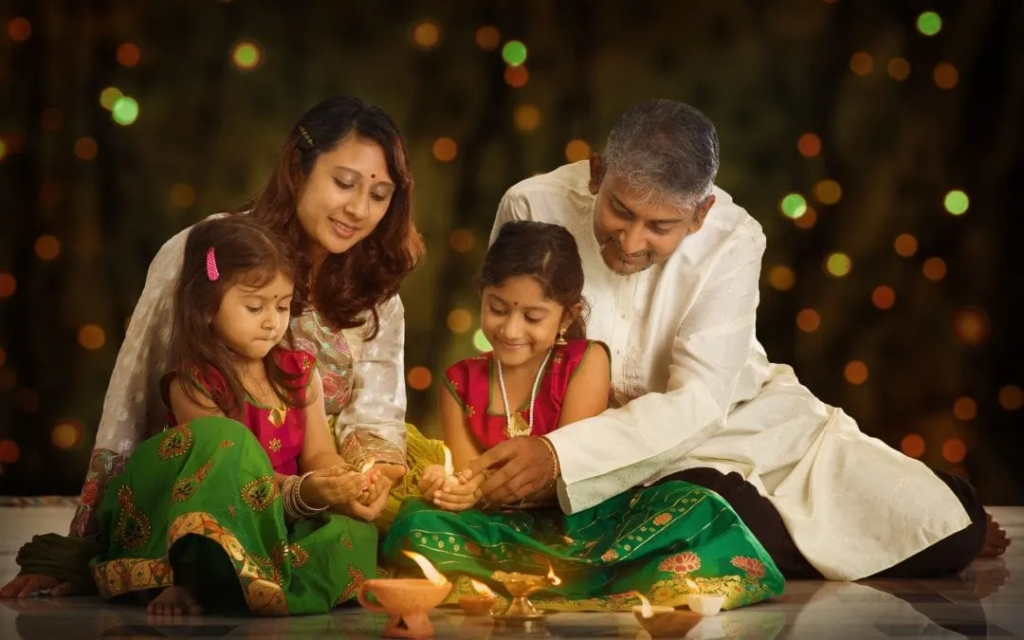
Diwali celebration in south India
Down in South India, Diwali is celebrated with a unique blend of tradition and modernity. People decorate their homes with marigold flowers, mango leaves, and colorful kolam designs. The day begins with an oil bath, symbolizing the cleansing of the body and soul. Traditional sweets like Mysore Pak and Jangiri take center stage, adding a delectable touch to the festivities.
The main day of the celebrations, Naraka Chaturdashi, falls during the Tamil month of aipasi, when Diwali is celebrated in Southern India. The oven is cleaned the day before Naraka Chaturdashi, smeared with lime, and decorated with religious symbols before being filled with water and used for the oil bath on the main day.
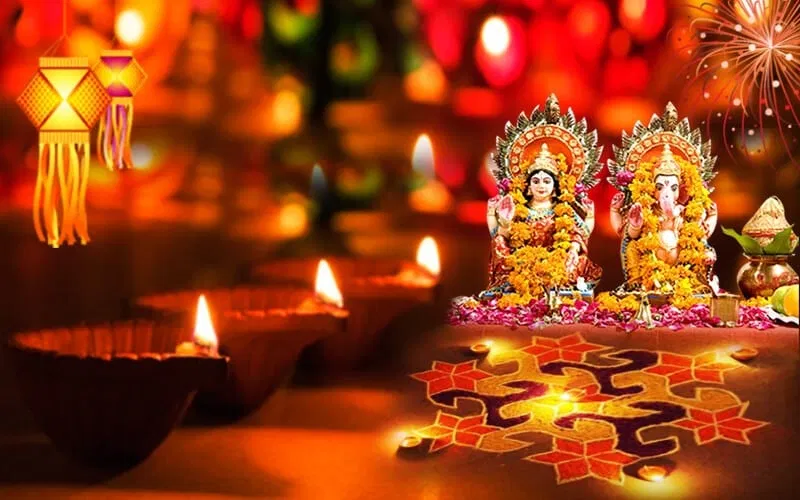
In Andhra Pradesh, people celebrate Diwali by performing a musical version of the story of Hari called Harikatha. This is because it is believed that Satyabhama, the consort of Krishna, killed the demon Narakasura, and as a result, people offer prayers to special clay idols of Satyabhama. Diwali, also known as Ashwija Krishna Chaturdashi, is celebrated in Karnataka where people take an oil bath in observance of Krishna’s purported removal of bloodstains from his body following his defeat of Narakasura.
In Karnataka, women celebrate Diwali’s third day, Bali Padyami, by drawing vibrant rangolis in their homes, constructing forts out of cow dung, and telling tales about King Bali.
Hindus in South India use kolam designs to decorate their homes rather than rangolis as they do in North India. Following the oil bath, fresh clothes are put on, firecrackers are set off, and a special custom known as Thalai Deepavali is observed, in which newlyweds celebrate their first Diwali at the bride’s parents’ house.
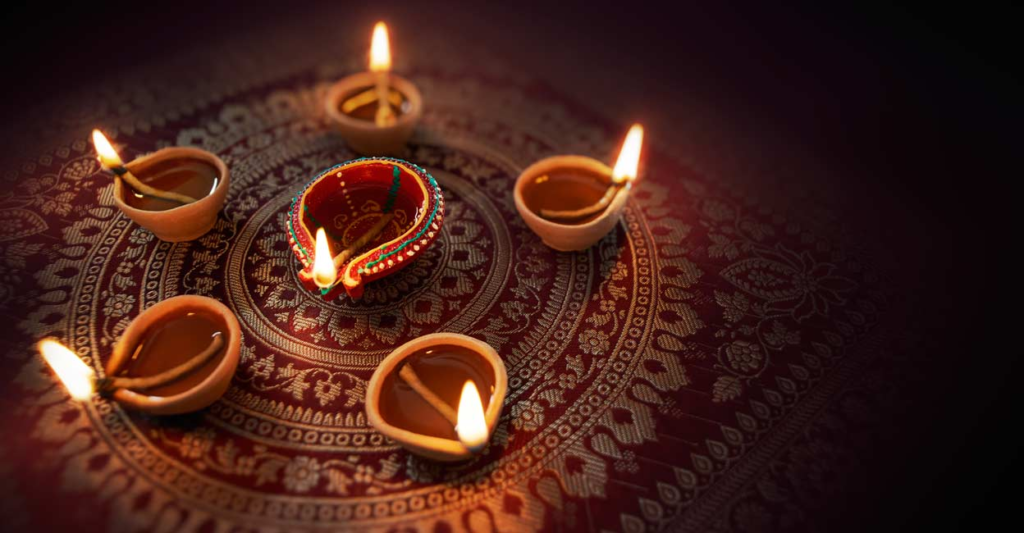
Diwali celebration in Bengal
During Diwali, Bengalis worship Kali, the goddess of strength. Because Ganesha is a representation of auspiciousness, he is worshipped in some homes. The customs of lighting lamps, candles, diyas, and setting off firecrackers are still practiced in Eastern India, but some followers also leave their doors open to welcome Lakshmi because they think the diety would never enter a darkened home.
Diwali is celebrated as Kali Puja in West Bengal, where people worship Kali late into the night, create rangoli, and believe that the night of Diwali is the night of the ancestors, or Pitripurush, when diyas are lit on long poles to guide their souls to heaven. This custom is still observed in rural Bengal even today.
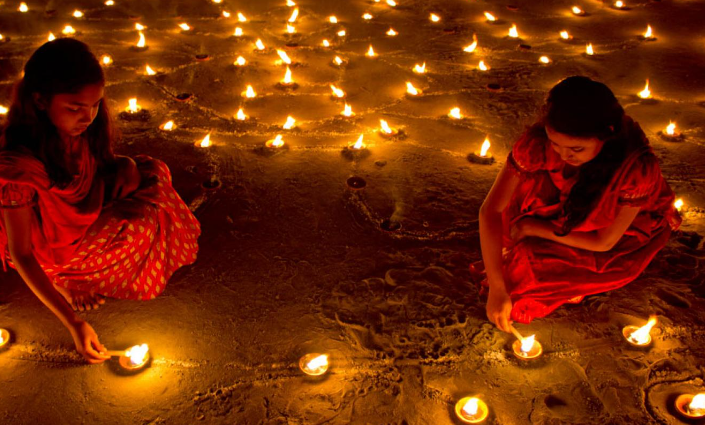
Diwali celebration in Maharashtra
In Maharashtra, Hindus celebrate Diwali over four days. The first day, Vasubaras, is dedicated to performing an Aarti of cows and calves, symbolizing the love between a mother and her child. Day two is dedicated to Dhanteras, also known as Dhanatrayodashi. On Day three, people celebrate Narakchaturdashi, taking an early morning scented oil bath and visiting a temple. Following this, they feast on a special Diwali preparation called Faral, which consists of delectable sweets like “karanji” and “ladoo” as well as spicy foods like “chakli” and “sev.” On Day four, which is the main Diwali day, people perform Lakshmi Puja, worshipping Lakshmi and symbols of wealth like money and jewelry.

Diwali celebration in Orissa
While the celebration of Diwali is primarily linked to commerce and business in Western India, where new endeavors, property purchases, store openings, and special occasions like marriages are deemed auspicious, the Hindu community in Odisha also honours their ancestors on this event. With rangoli making and painting footprints to welcome Laxmi an essential part of Diwali celebrations, which for Gujaratis mark the start of the New Year, Western India’s markets are packed with Diwali shoppers a few days before the festival.
Diwali celebration in Gujarat
In Gujarat, it’s very auspicious to light a diya with ghee and leave it burning all night. The following morning, gather the flame from the diya and use it to make kajal, which women apply to their eyes in the belief that it will bring them prosperity for the entire year.
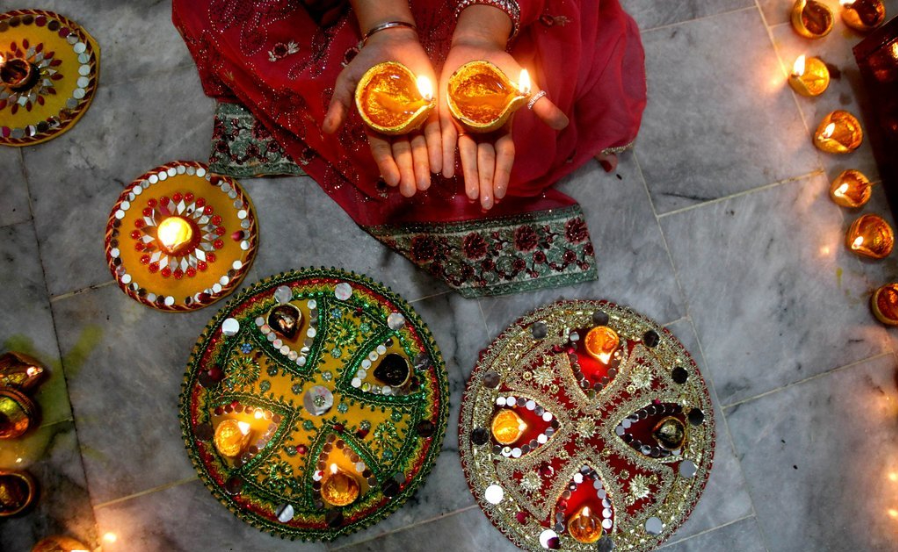
Conclusion
In conclusion, Diwali is a celebration that encapsulates the diversity and richness of India’s cultural landscape. From the grandeur of North India to the cultural extravaganza in the East, the traditions in the South, the grand carnivals in the West, and the religious reverence in the Central regions, Diwali unites the nation in a tapestry of lights, colors, and traditions. As we celebrate Diwali in 2023, let us embrace the cultural significance and shared joy that this festival brings to millions across the country.
To explore more latest news : Click Here
ALSO READ : National Education Day 2023 : Understand The Significance Of November 11th Celebration







